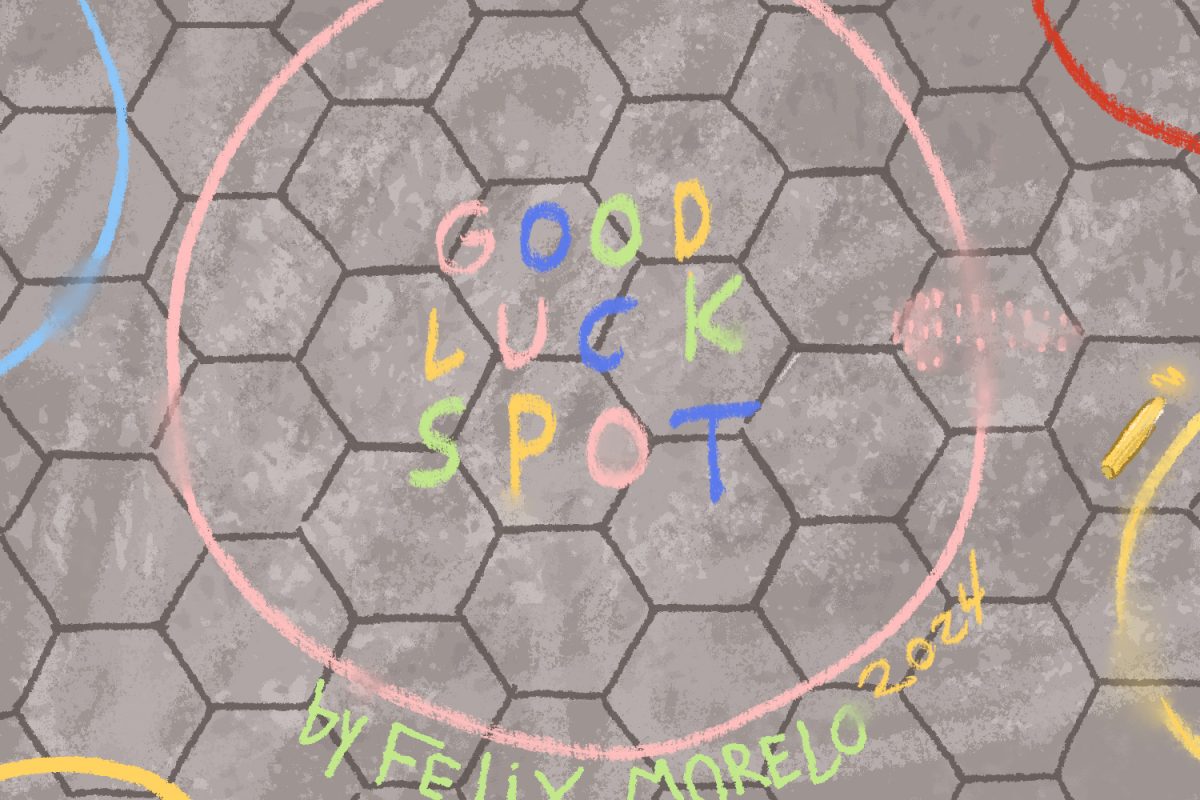For many NYU students, encountering the chalk-drawn bad luck spots scattered through the walkways of Washington Square Park has become part of their daily routine. I always change my course in order to avoid them, for fear of any bad luck seeping into my new life at NYU, and jumping around until I can step into the few incredibly tiny good luck circles.
The New York Times covered this phenomenon of bad luck spots in June of 2023, interviewing the artist behind the spots, Felix Morelo. According to the article, Morelo’s circles try to “[press] on the city’s energy points to see how people respond.” As for the bad luck circles, he says he “draws more of those when he is having a bad day.” If the park’s current landscape is any indication, it seems this has not been an easy fall for Morelo.
As of late, there have been a lot more bad luck circles than good ones. If you’re lucky, you might see a pastel-colored hug or kiss circle, but they seem to be few and far between. The bad luck circles have become a more pervasive presence. “Last year there were more varieties, good luck spots and bad, but now there are only bad ones,” CAS sophomore Atticus Zumbro said in an interview with WSN. “It is a bad omen for our university. I’m not superstitious, but I always notice.”
As a superstitious person, I recently began to wonder why these words had so much power over me, and if other NYU students share the same sentiment. I spent an afternoon in Washington Square Park observing how NYU students interacted with the chalk-drawn art. I saw the brave few who simply walked through the circles without a second thought, while others would opt to walk around or occasionally purposely step into a good luck circle.
The students’ behavior portrays an interesting psychological impact the words “bad luck” have on individuals. For some students like me, the power of suggestion — where an idea conveyed to an individual manifests into reality — very much influences our behavior and thoughts. For example, if someone believes that a certain area is unlucky, they may behave more cautiously with their everyday routine or perceive ordinary events as a confirmation of their superstition.
One day when I was rushing to class, I stepped into an unavoidably large bad luck circle and was unable to reach a good luck circle to reverse the effect. I went on with the rest of my day convinced that bad luck would follow. Interestingly, my negative expectations connected to the idea of bad luck came true, as my new Apple Pencil seemingly disappeared by the end of the day. I spent the next three days searching for it until I inevitably had to accept the power that bad luck spots had over me, and since then, I haven’t risked it.
For some students, the chalk displays do not impact them in the same way. “I find myself playing hopscotch with the bad luck circles because they are everywhere, and it can feel fun at times,” Tisch junior Campbell Howard said.
But other students feel similarly to me. “The bad luck circles are very upsetting,” Tisch sophomore Delilah Brainin said. “It seems it’s only intention is to make my day worse. I always have to step in the good luck circles after this, taking me out of my way.”
“I feel incredibly bothered by the bad luck circles,” CAS sophomore Ever Trattner said. “I feel weird for going out of my way and not stepping in it, but I also feel pressure that if I did, I would be letting myself down in the future.”
Whether you laugh off the spots, actively avoid them or don’t even notice, the experience of walking through Washington Square Park this semester has been tinged with the idea of temporary, or even inevitable, anguish. While I can’t guarantee that stepping in a chalk-drawn circle will alter your fortune, it may be worth taking a look at how these suggestive omens affect your psyche. As the semester kicks into full swing, perhaps it is important to find ways to create a good luck circle for yourself — whatever that means for you.
Contact Alexandria Smith at [email protected].























































































































































